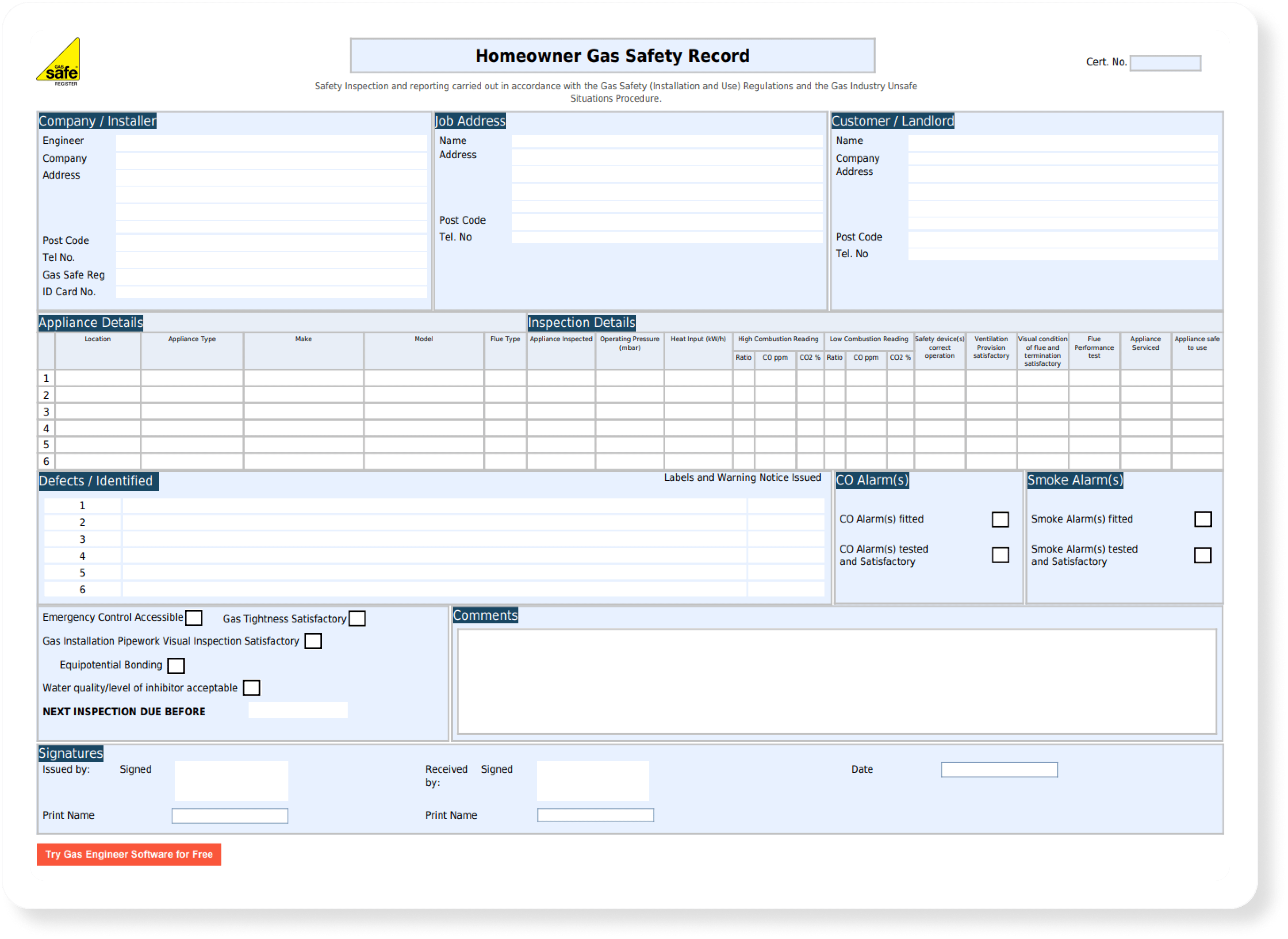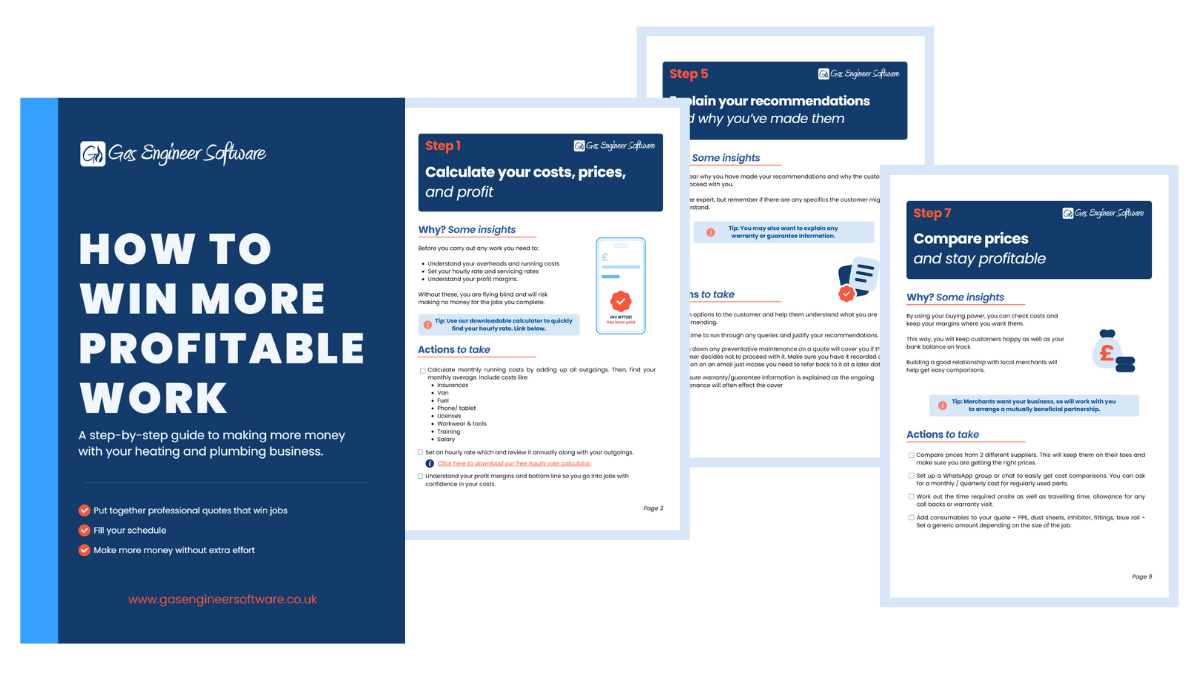Look Inside Your Business: What Are Your Numbers Telling You?
![[Featured Image] What are your numbers telling you](https://gasengineersoftware.co.uk/wp-content/uploads/2018/02/Featured-Image-What-are-your-numbers-telling-you.png)
Do you know exactly how much your business costs to run each month? How much profit it makes? What about how much tax you’ll need to pay?
If you’re a business owner, you probably want to make more money. Some will look to marketing strategies to find more work, others might look for ways to cut costs — but you can never truly know the most effective way without a good grasp of your key business metrics.
These numbers tell you everything about your business and should inform every decision you make. In this blog, we’ll cover:
Why you should keep track of key business numbers
An alarming number of trades business owners only look at their accounts at the end of the financial year – some even months later when their accountant completes the tax return. At this point, the time to make meaningful changes has often come and gone.
Your business numbers reveal lots about the health of your business. Ideally, you should be checking your numbers at least once a month so you can see what’s working, make adjustments where necessary, and increase profits for both you and your team.
What numbers are important & useful?
In a typical heating & plumbing business, we would recommend keeping track of these numbers on a monthly basis:
Once you’ve started tracking these numbers, you can then compare them month-on-month and even year-on-year. Ultimately, you are looking for changes and trying to link them with actions to find out what is working the best.
Setting up reports for easy oversight
These numbers are crucial to your business. Knowing and analysing them will help you grow and make much more money in the long run.
However, that doesn’t change the fact that the time spent actually collecting and analysing these numbers earns you no money. In other words, you want to make the process of tracking numbers as quick, simple, and painless as possible.
Luckily, there’s a huge range of apps and software on the market to help you do just that.
Running your business through Gas Engineer Software allows you to access most of these numbers in a few clicks, with no extra paperwork or data entry on your end. You can even integrate your workflow with specialised accounting software packages like Xero or Quickbooks to speed up the process and make life easier.
What do these numbers tell you?
Collecting & reporting these figures are just numbers on a spreadsheet. The real value comes when you apply your knowledge of your business to these numbers. Analysing these numbers will help you understand:
By breaking down these numbers into two core areas, you can use these numbers analytically for your business. Here’s some ideas to get you started:
#1 – The health of your business
Your profit/loss number provides you with a great overview of the health of your company. Comparing it to last year’s number gives a good idea of growth, and it’s a good starting point to influence how you see your other numbers. Furthermore, putting expenses in the categories relevant to you offers a quick and easy way to break down what worked and what didn’t.
Perhaps you’ve noticed your schedule filling up and work getting busy. A growing profit margin can give you the “green light” so-to-speak for hiring an engineer to help out.
Being able to track your invoices is a huge win, too. Late payments are a huge issue hurting thousands of trades businesses – many without them even realising the issue. If a large portion of the money you ‘earned’ hasn’t been paid within a few weeks, you should look into solutions like automated payment reminders.
#2 – Marketing & sales effectiveness
Numbers like your acquisition vs retention figures and marketing expenses help you pin down what marketing strategies are working and where most of your customers are coming from. You can then decide to double down on these strategies and spend less time and money on those less effective.
Meanwhile, an unusually low quote win-rate could imply that perhaps you’re taking too long to send out quotes, or that they don’t look professional enough. These are numbers which you can easily track after making meaningful changes to see if it’s been a success.
Remember to take a balanced approach
There needs to be balance in everything.
If you can get into the habit of making one improvement every month and checking the results the following month then, you’ll start to notice massive differences over time.
But it’s important not to place too much emphasis on the numbers alone. You shouldn’t be spending hours and hours recording & staring at these numbers. Instead, allocate a set amount of time each week or month to review them and make judgements from what you see.
Think of your research and planning like you would look at a map. If you want to get somewhere, first you need to find where you are. Then, you can use these numbers to help you plot a course to reach your destination or goal.
Next steps:
If you’ve been thinking about implementing software into your workflow to save time, here’s what you can do next:
- Visit our resources centre where you'll find more articles like this one and our free gas rate calculator.
- Start a free trial to see exactly how our software works for your business.
- Watch our video demo to get an idea of how our software works. You can also book a 1-on-1 session with our customer success team for a more personalised experience.
- Know an engineer who's still using paper? Help them and us out by sending our software their way!

